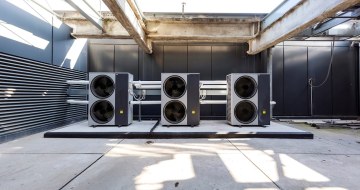
November 6, 2024 in Advisory Notes
Integrated Fire Mode Testing — Fundamental to Buildin...
Modern fire protection systems are now often integrated into other building systems and require a comprehensive testing approach to assure they will o...
June 8, 2013
Legionnaires’ disease is a sometimes fatal form of pneumonia contracted by inhaling fine droplets of water containing the Legionella bacteria. These droplets can be emitted by infected cooling towers and also domestic warm or hot water systems. In water systems the source of the droplets is usually from shower outlets or tap aerators. Correct design and careful operation and maintenance of these systems are required to ensure they do not pose a health risk.
Legionella is a common organism in the environment and can be found in very low concentrations in the drinking water supply. Legionella survival and growth is temperature dependant and the bacteria will multiply when in a suitable environment to an extent that it can become dangerous.
Ref: Legionella and the Prevention of Legionellosis, World Health Organisation 2007
Warm water systems are designated by legislation in some jurisdictions. They are water systems that are designed to emit water at a safe temperature for personal hygiene; washing and showering. Definitions vary slightly across jurisdictions however they are generally systems that contain water between 25 and 60°C and deliver water not above 45°C. Hot water systems are typically defined as systems that contain water between the temperatures of 50 and 70°C, store water at not less than 60°C and deliver water not above 50°C.
Operational Risks
The temperature at which these systems operate puts them at particular risk with respect to Legionella. To limit operational concerns these systems are usually designed to generate, store and circulate water at higher temperatures (50-60°C), and to mix with cold water at point of use to provide a safe delivery temperature. Problems arise if the water in these systems cools to temperatures where Legionella bacteria can multiply (25-45°C). This may occur for a number of reasons including equipment degradation or failure, inadequate maintenance, poor original design, system modifications, and the existence of physical or operational ‘dead legs’ such as unused or infrequently used pipe work. A focus on energy efficiency may sometimes result in systems being adjusted to run at lower temperatures, or for circulating pumps to run only as required, to reduce energy consumption. This can result in dangerous bacterial growth.
Hot water systems if poorly designed, badly maintained or wrongly operated can also pose a Legionella risk.
Regulatory Requirements
In some jurisdictions, systems designated as warm water systems and installed in higher risk circumstances (including health care, aged care, correctional facilities, car washes and hotels) have legislated requirements relating to their design, registration, operation, maintenance and testing. State or Territory Health authorities should be contacted for further information on local regulatory requirements governing warm and hot water systems and Legionella management. General technical requirements for the design of these systems are set out in Australian Standard AS/NZS 3500.4 Plumbing and drainage – Heated water services.
Risk Management
The following is a suggested approach to manage the Legionella risks associated with warm and hot water systems:
References
For further information, please contact us.
download pdf
November 6, 2024 in Advisory Notes
Modern fire protection systems are now often integrated into other building systems and require a comprehensive testing approach to assure they will o...

August 8, 2024 in Advisory Notes
Over the past decade, automated data analytics have been seamlessly integrated into various facets of our daily lives, including the operation and mai...

June 24, 2024 in Advisory Notes
Mould plays an important role in the natural environment as a break-down mechanism for dead organic matter. In the built environment it is an unwanted...

April 30, 2024 in Advisory Notes
A lot has changed since A.G. Coombs released our first Advisory Note on heat pumps back in 2018. Increasingly, asset owners are no longer asking if he...